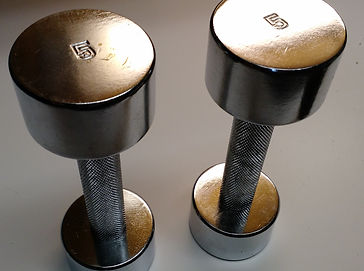
Another Blog Article by David E. Smalley, M.D.
This article is on a principle of pain relief that is covered much more in depth in the book, The Miracle of Pain. The content is educational and should not be used as medical advice.
The original photos below emphasize the wonders of nature around us, which reflect the miracles within us.
December 20, 2019 — Is "No pain, no gain" correct?
Many patients have asked me, “No pain, no gain, right?” They had come to me for advice about pain in a joint or muscle. Their question indicated that they were not sure what to do. They had tried to work through the pain or ignore it, but that had not worked. The pain had continued and was becoming a nuisance or a limiting factor for what they wanted to do.
Years ago, I began thinking that the saying, “No pain, no gain” was wrong, because it was getting many of my patients into trouble. After I talked with them, I realized that they were thinking that they just had to be tough and push through the pain. At first, I began telling them that the saying was wrong. After teaching more patients how to deal with back and knee pain, I realized that they were misunderstanding the real meaning of the saying.

Pruning an apricot tree well takes time but produces great results, similar to learning from our pain
The misunderstanding comes when patients just want to do what they want to do without the consequences. Pain will always accumulate if we ignore it and push through it. The only time pushing through pain works is if we just need to warm things up and there is no significant injury.
_j.jpg)
Five-pound dumbbells; lifting free weights is not a good place to start
Originally, the saying was used to get patients to move again, when they had not moved for a long time because of injury or disease. Within a few weeks of incapacity and bedrest, and especially within a few months, stiffness and weakness are difficult to get over. Lifting free weights is not the best way to start. The wrong exercises are just as bad as not doing anything. Trying to move, and listening to the muscles and joints, is a good way to start. A good physical therapist under the direction of a good physician can also help.
If we have an injury and continue to cover up the pain with medication, we will not be able to learn our limits. We will also not be able to learn what we can do without pain. Anything that just masks the pain, like alcohol, acupuncture or ice, will do the same thing. However, a few days after an injury, a heating pad can help if the pain is significant, though we do not want to overuse it and become dependent on it, because that can create other problems.
Learning from the little ups and downs is just as important as learning from the big ups and downs of pain. Learning takes time, is frustrating and makes us think. Learning about our pain takes us away from other things we would rather be doing. Correctly used, the saying “No pain, no gain” means to not be afraid to try, feel the pain and take time to learn from it, so we can lessen it or get over it.
* * * * *

An ice pack will mask the pain

Trying to learn can be frustrating, but it is worth it!